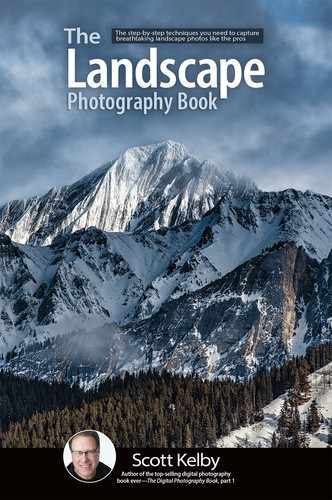And, You’ll Probably Want an ND Filter

If you want to get silky smooth waterfalls and streams, and smooth streaky clouds above your epic landscapes (provided, of course, that the clouds are moving at a relatively quick pace), then you want the other of the two neutral density filters, simply called an “ND filter.” ND filters are dark, so they force your shutter to stay open longer than it normally would in bright shooting conditions, so things that are moving in your image (like water going over a waterfall) get that silky smooth look (there’s more on how to use these in Chapter 6). By the way, with ND filters, the entire surface of the filter is darkened from edge to edge, and there are different types of ND filters (and different amounts of darkness, which we’ll also discuss in Chapter 6). One type is the square glass or plastic filter that slides down into a bracket that’s mounted in front of your lens, and then there are circular ND filters (as seen here), which screw right onto the front of your lens like traditional filters. While I’m a big fan of the square type for ND Grad filters (because, as I mentioned on the previous page, they allow you to align the bottom of the gradient with the horizon line), I prefer the circular ND filters because there’s less fuss—you just screw it right onto the end of your lens, whereas the square ones require you to put on a bracket first, then carefully slide the square into its slot, and the whole process just takes twice as long, and has more parts. Performance-wise, they both work the same—they make your camera think it’s darker outside than it really is, forcing your shutter to stay open longer.
